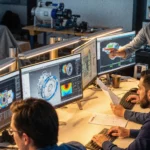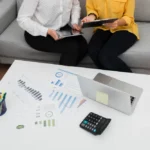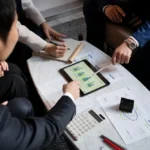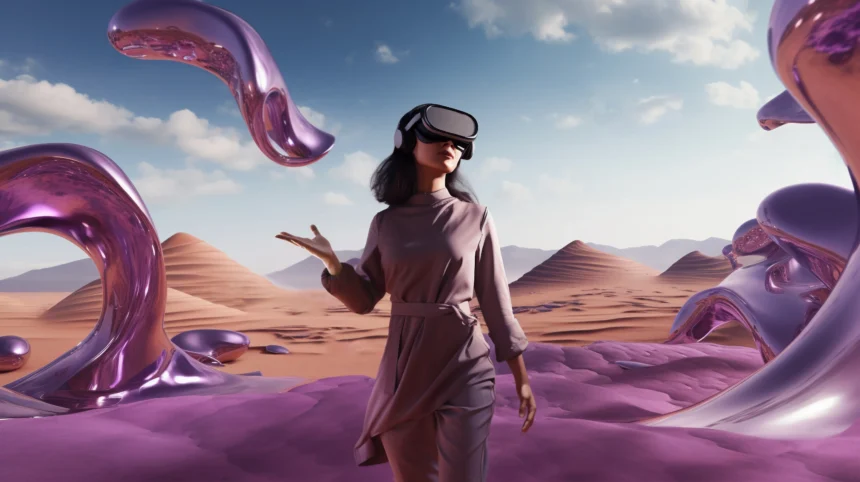The world of design never stands still. Each year brings fresh ideas, smarter technologies, and new ways to express creativity. From sleek minimalism to immersive 3D visuals, design trends continue to evolve as brands seek to capture attention and connect emotionally with audiences.
At Designmode24.com, innovation and creativity go hand in hand. The platform constantly explores modern design movements shaping the digital world—from web and UI/UX design to branding, visuals, and motion graphics. This year’s trends are not just about how designs look but how they feel—how they enhance usability, communicate identity, and create unforgettable user experiences.
Below, we explore 10 innovative design trends dominating 2025 that every designer, marketer, and business owner should keep an eye on.
See also How Quartist Builds a Global Community of Digital Innovators
1. Minimalism with Depth
Minimalism has long been a favorite among designers for its clarity and elegance. But this year, minimalism is evolving beyond flat simplicity.
Modern minimalist designs are now embracing depth, texture, and dimension. By using soft shadows, gradient layers, and subtle 3D elements, designers are adding richness without clutter. This creates balance—clean visuals that still feel dynamic and engaging.
Why it works: Minimalist layouts reduce distractions, improve readability, and direct focus toward essential content, increasing conversions and engagement rates.
2. Immersive 3D and Motion Design
With the rise of powerful rendering tools and faster internet speeds, 3D design has become more accessible than ever. Websites and apps now use 3D visuals to create lifelike experiences, from product previews to interactive animations.
Designmode24.com highlights that this year’s trend leans toward subtle motion—micro-interactions, scroll-based animations, and cinematic transitions that bring designs to life without overwhelming users.
Example applications:
- 3D product showcases in eCommerce.
- Animated brand mascots.
- Interactive landing pages with parallax movement.
The key is balance—movement should feel natural and purposeful, guiding attention rather than distracting from it.
3. Personalized User Interfaces
Personalization is no longer limited to marketing—it’s becoming a core part of design itself. Websites and applications are increasingly using AI and behavioral analytics to adapt layouts, colors, and content to individual users.
For example, a returning visitor might see a homepage that reflects their past interests or purchase history.
This year, adaptive design is about creating interfaces that learn and evolve, ensuring users always see the most relevant and engaging experience possible.
Why it matters: Personalized experiences build stronger user loyalty, increase time on site, and boost conversion rates.
4. Experimental Typography
Typography has become a creative playground for designers. 2025 is all about bold, expressive, and experimental fonts that capture attention instantly.
Designmode24.com notes that designers are mixing oversized headlines with delicate body text, layering fonts, and even animating typefaces to create visual rhythm. Variable fonts—those that change weight, width, or slant dynamically—are also trending, offering new levels of flexibility.
Design tip: While experimental typography can make a layout stand out, readability must remain a priority. Striking the right balance between creativity and clarity is key.
5. Dark Mode and Contrast-Driven Design
Dark mode is here to stay—but this year, it’s not just a visual preference. It’s a design philosophy.
High-contrast color schemes improve legibility, reduce eye strain, and create a premium aesthetic. Designers are combining deep blacks, soft grays, and neon accents to produce visually stunning contrasts.
In addition, dual-mode interfaces—offering both light and dark themes—are becoming a standard for accessibility and personalization.
Why users love it: Dark mode saves battery life on mobile devices and provides a comfortable viewing experience, especially at night.
6. Organic Shapes and Fluid Design
After years of rigid grids and geometric precision, design is shifting toward natural, organic shapes. Fluid layouts mimic the curves and asymmetry found in nature, giving websites a more human and approachable feel.
Wavy dividers, irregular backgrounds, and flowing typography are becoming popular across web and app design. These organic elements break monotony and make interfaces appear more modern and alive.
Pro tip: Use fluid shapes strategically to separate sections or guide the user’s eye through the layout.
7. AI-Generated Visuals and Smart Design Tools
Artificial Intelligence has revolutionized how designers work. Platforms like Designmode24.com are exploring how AI can streamline workflows, generate design assets, and even create entire layout concepts.
This year, designers are embracing AI-assisted creativity, where human vision meets machine precision. Tools can now suggest color palettes, generate logos, or create adaptive visual elements based on user data.
The future of design lies in collaboration between designers and AI—where technology enhances creativity rather than replacing it.
8. Sustainable and Ethical Design
Design is no longer just about beauty; it’s about responsibility. 2025 marks a stronger focus on sustainability and ethics in digital and product design.
This includes:
- Eco-friendly visuals: Nature-inspired colors and themes promoting sustainability.
- Accessible layouts: Designs that are inclusive for users with disabilities.
- Ethical UI: Avoiding manipulative patterns like hidden fees or misleading buttons.
Designmode24.com encourages designers to think beyond aesthetics—to create experiences that are both beautiful and beneficial for society.
Why it matters: Brands that prioritize ethical design build stronger trust and long-term customer relationships.
9. Bold Color Gradients and Neon Glows
Color is one of the most powerful tools in a designer’s toolkit, and this year, it’s all about vibrant gradients and glowing effects.
Designers are blending multiple hues to create energy and motion within static designs. Neon accents—especially in blues, purples, and pinks—are making a comeback, inspired by retro-futuristic aesthetics.
These bright visuals are being used to highlight calls-to-action, hero banners, and brand identities, giving websites a fresh, futuristic edge.
Design insight: When using bold colors, balance them with neutral tones to maintain visual harmony and readability.
10. Micro-Interactions and Human-Centered Design
Micro-interactions—tiny animations triggered by user actions—are redefining the way people experience digital interfaces.
Think of a button that changes color when clicked, a heart icon that pulses when liked, or a progress bar that reacts as users scroll. These small moments make interfaces feel more alive and responsive.
Designmode24.com emphasizes that micro-interactions not only improve usability but also add delight—a key ingredient for user satisfaction.
When combined with human-centered design principles, they create experiences that feel intuitive, emotional, and memorable.
Bringing It All Together: The Future of Design in 2025
This year’s design landscape is defined by innovation, personalization, and emotional connection. From adaptive layouts to AI-driven creativity, the focus is shifting toward design that serves people, not just aesthetics.
Here’s what sets 2025 apart:
- Technology and creativity are merging to create smarter, more efficient design processes.
- Emotion and authenticity are now central to brand storytelling.
- Accessibility and sustainability are becoming non-negotiable standards.
Designmode24.com continues to lead conversations around these evolving trends, helping designers and brands stay ahead of the curve.
In a world where first impressions happen in seconds, the right design can make all the difference. Whether you’re refreshing your website, building a brand, or experimenting with new visuals, the key is to stay curious, stay human, and design with purpose.
Because in the end, innovation isn’t just about following trends—it’s about creating experiences that truly connect.










 /home/u448362301/domains/theexpotab.com/public_html/wp-content/themes/foxiz/templates/popup.php on line 167
/home/u448362301/domains/theexpotab.com/public_html/wp-content/themes/foxiz/templates/popup.php on line 167